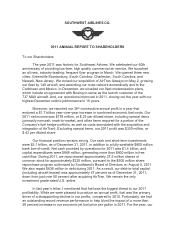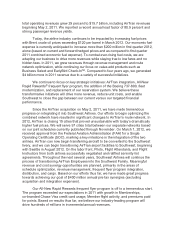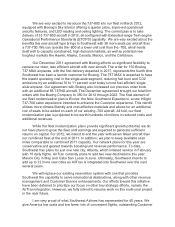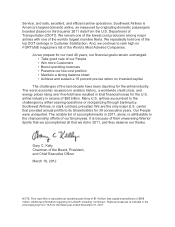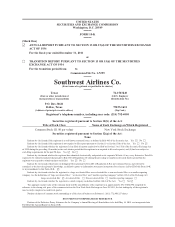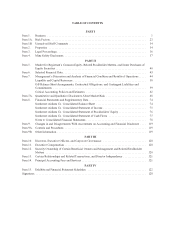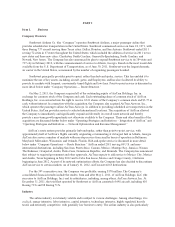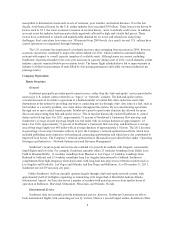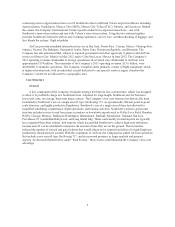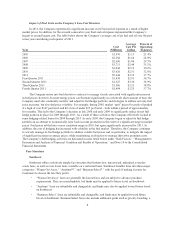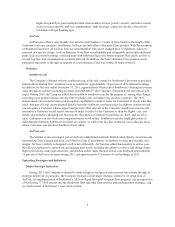Southwest Airlines 2011 Annual Report Download - page 9
Download and view the complete annual report
Please find page 9 of the 2011 Southwest Airlines annual report below. You can navigate through the pages in the report by either clicking on the pages listed below, or by using the keyword search tool below to find specific information within the annual report.connecting service opportunities from over 60 Southwest cities to different Volaris airports in Mexico including:
Aguascalientes, Guadalajara, Mexico City (MEX), Mexico City-Toluca (TLC), Morelia, and Zacatecas. Behind
the scenes, the Company’s International Connect portal conducts two separate transactions – one with
Southwest’s reservation system and one with Volaris’s reservation system. Tying the two systems together
provides Southwest Customers with an easy booking experience, one low fare, and thru-checking of luggage, and
also blends the airlines’ flight schedules.
AirTran provides scheduled international service in San Juan, Puerto Rico; Cancun, Mexico; Montego Bay,
Jamaica; Nassau, The Bahamas; Oranjestad, Aruba; Punta Cana, Dominican Republic; and Bermuda. The
Company has also announced that, subject to required government and other approvals, it plans to add AirTran
service to Mexico City, Mexico in May 2012 and to Cabo San Lucas, Mexico in June 2012. The Company’s
2011 operating revenues attributable to foreign operations (all of which were attributable to AirTran) were
approximately $74 million. The remainder of the Company’s 2011 operating revenues, $15.6 billion, were
attributable to domestic operations. The Company’s tangible assets primarily consist of flight equipment, which
is deployed systemwide, with no individual aircraft dedicated to any specific route or region; therefore the
Company’s assets are not allocated to a geographic area.
Cost Structure
General
A key component of the Company’s business strategy has been its low-cost structure, which was designed
to allow it to profitably charge low Southwest fares. Adjusted for stage length, Southwest and AirTran have
lower unit costs, on average, than most major carriers. The Company’s low-cost structure has historically been
facilitated by Southwest’s use of a single aircraft type, the Boeing 737, an operationally efficient point-to-point
route structure, and highly productive Employees. Southwest’s use of a single aircraft type has allowed for
simplified scheduling, maintenance, flight operations, and training activities. Southwest’s point-to-point route
structure includes service to and from many secondary or downtown airports such as Dallas Love Field, Houston
Hobby, Chicago Midway, Baltimore-Washington International, Burbank, Manchester, Oakland, San Jose,
Providence, Ft. Lauderdale/Hollywood, and Long Island Islip. These conveniently located airports are typically
less congested than other airlines’ hub airports, which has enabled Southwest to achieve high asset utilization
because aircraft can be scheduled to minimize the amount of time they are on the ground. This in turn has
reduced the number of aircraft and gate facilities that would otherwise be required and allows for high Employee
productivity (headcount per aircraft).With the acquisition of AirTran, the Company has added AirTran operations
that include a new aircraft type, the Boeing 717, and an increased presence in larger markets and primary
airports. As discussed further below under “Risk Factors,” these factors could diminish the Company’s low-cost
advantage.
3

